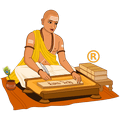























Sunrise06:13
Sunset17:39
Moonrise05:01, Oct 20
Moonset16:24
Shaka Samvat1947 Vishvavasu
Vikram Samvat2082 Kalayukta
Gujarati Samvat2081 Nala
Amanta MonthAshwina
Purnimanta MonthKartika
WeekdayRaviwara
PakshaKrishna Paksha
TithiTrayodashi upto 13:51
NakshatraUttara Phalguni upto 17:49
YogaIndra upto 02:05, Oct 20
KaranaVanija upto 13:51
KaranaVishti upto 02:45, Oct 20
Pravishte/Gate3
Rahu Kalam16:13 to 17:39
Gulikai Kalam14:47 to 16:13
Yamaganda11:56 to 13:22
Abhijit11:33 to 12:19
Dur Muhurtam16:07 to 16:53
Amrit Kalam09:59 to 11:44
Varjyam03:05, Oct 20 to 04:51, Oct 20
Notes: All timings are represented in 24-hour notation in local time of Gursahaiganj, India with DST adjustment (if applicable).
Hours which are past midnight are suffixed with next day date. In Panchang day starts and ends with sunrise.


 Vrishchika 27:55+
Vrishchika 27:55+ Jyeshtha 27:55+
Jyeshtha 27:55+

 Kumbha 24:45+
Kumbha 24:45+ Shatabhisha 08:01
Shatabhisha 08:01

 Mesha
Mesha Ashwini 22:44
Ashwini 22:44

 Mesha 25:23+
Mesha 25:23+ Bharani 20:02
Bharani 20:02

 Vrishabha 26:24+
Vrishabha 26:24+ Rohini 15:20
Rohini 15:20

 Mithuna
Mithuna Mrigashira 13:36
Mrigashira 13:36

 Karka
Karka Punarvasu 11:54
Punarvasu 11:54

 Karka
Karka Pushya 12:00
Pushya 12:00

 Karka 12:42
Karka 12:42 Ashlesha 12:42
Ashlesha 12:42

 Vrishchika
Vrishchika Anuradha
Anuradha

 Vrishchika
Vrishchika Anuradha 07:51
Anuradha 07:51

 Dhanu 22:14
Dhanu 22:14 P Ashadha 15:45
P Ashadha 15:45

 Makara
Makara U Ashadha 17:29
U Ashadha 17:29

 Kumbha
Kumbha Shatabhisha 18:20
Shatabhisha 18:20In Hindu Calendar, the day starts with local sunrise and ends with next day local sunrise. As sunrise time is different for all cities, Hindu Calendar made for one city is not valid for any other city. Hence it is important to use location based Hindu Calendar, like this website. Further, each Hindu day consists of five elements, which are called angas. These five elements are -
In Hindu Calendar, all five elements together are called Panchang. (In Sanskrit: Panchang = Pancha (five) + Ang (part)). Hence Hindu Calendar which shows all five elements for each day is called Panchang. In South India Panchang is known as Panchangam.
When Hindu Calendar includes Muslims, Sikh, Christian, Buddhist and Jain festivals, including national holidays, it is called as Indian Calendar.